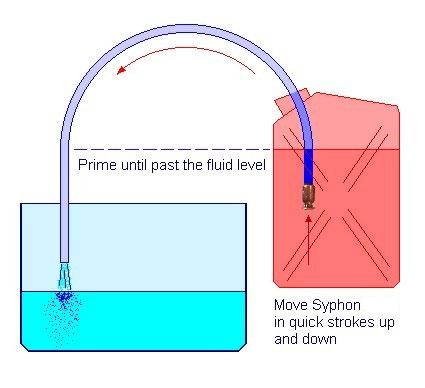Drinking Straw
1. When drinking with a straw, one has to suck the straw. This causes the pressure in hte straw to decrease.
2. The external atmospheric pressure, which is greater, will then act on the surface of the water in the glass, causing it to rise through the straw.

Rubber Sucker
1. When the rubber sucker is put onto a smooth surface, usually a glass or tiled surface, the air in the rubber sucker is forced out. This causes the space between the surface and the sucker to have low pressure.
2. The contact between the rubber sucker and the smooth surface is airtight.
3. The external atmospheric pressure, which is much higher, acts on the rubber sucker, pressing it securely against the wall.
Siphon
1. A rubber tube can be used to siphon liquid from a container at a higher level to another at a lower level. For example, we can remove petrol from the petrol tank of a vehicle or dirty water from aquarium.
2. The tube is first filled with the liquid and one end is placed in the liquid in the container A. The other end is placed at a level which must be lower than the surface of the liquid in container A.

3. The pressure in the rubber at the lower end is equal to atmospheric pressure plus the pressure due to h cm column of liquid. As the pressure at the lower end is greater than the atmospheric pressure, the liquid flows out.
Vacuum Cleaner

1. vacuum cleaner applies the principle of atmospheric pressure to remove dust particles. When it is switched on, the fan sucks out the air from space inside the vacuum (space A). Space A then becomes a partial vacuum.
2. The atmospheric pressure outside, which is greater, then forces air and dust particles into the filter bag. This traps the dust particles but allows the air to flow through an exit ath the back.
Lift Pump
1. A lift pump is used to pump water out of a well or to a higher level. The greatest height to which the water can be pumped is 10 m. This is equivalent to the atmospheric pressure.
2. When the plunger is lifted, the upper valve closes and the lower valve opens. The atmospheric pressure, acting on the surface of the water, causes water to flow past valve B into the cylinder.
3. When the plunger is pushed down, the lower valve closes and the upper valve opens. Water flows above the plunger.
4. When the plunger is next lifted, the upper valve closes again and the lower valve opens once more. the atmospheric pressure, acting on the surface of the water, forces water past the lower valve into the cylinder. Simultaneously, the water above the plunger is lifted and flows out through the spout.
5. This process is repeated until sufficient water is obtained.